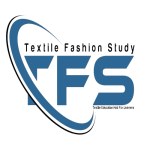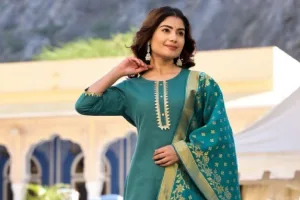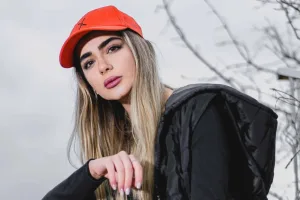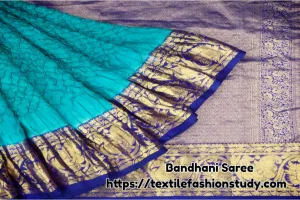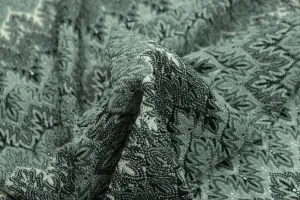Table of Contents
Silk Weave
A natural protein fiber is silk. Since its creation in ancient China, this silk has gained immense appeal for its magnificent shine, silky texture, and adaptability all over the world. But when you consider elegance, luxury, and eternal beauty, silk weave has long been linked to these concepts. In this essay, we’ll delve into the allure of silk fabric, learning about its different varieties, distinctive qualities, and uses in both fashion and interior design.
Best Silk Weave Fabric
There are different types of famous silk weaves in the market. However, there are some silk weaves famous in the world markets by their names through which these silks are distinguished from one to another. The following are the different types of silk weaves. They are-
- Charmeuse Silk Weave
- Habuta Silk Weave
- Dupioni Silk Weave
- Crepe Silk Weave
- Satin Silk Weave
- Organza Silk Weave
- Jacquard Silk Weave
- Brocade Silk Weave
- Shantung Silk Weave
- Faille Silk Weave
- Georgette Silk Weave
- Pongee Silk Weave
- Chiffon Silk Weave
- Matka Silk Weave
Charmeuse Silk Weave

The finest weave of silk is called charmeuse. But its graceful draping and shiny beauty are what it is most widely known for. It is essentially a thin silk weave cloth with a matte finish on one side and a faint gloss on the other. In addition, it is fragile by nature, necessitating cautious treatment. To increase its endurance, it is frequently lined. It is also a popular choice for high-end fashion since it feels smooth against the skin and may accentuate body shapes. Similarly, it is frequently utilized to create various opulent products, including flowing blouses, lingerie, evening gowns, and bridal dresses.
Habuta Silk Weave

One other kind of silk weave is hatbuta silk. The ancient history of China and Japan, however, is represented by this weaving. In theory, wet yarn is used for the weft in the plain-weave fabric known as hatutae, which is made of unthrown silk yarn. Because China produces the majority of the different types of habutae textiles, there are only roughly 27 different types of habutae silk specified in the standards. Habutae weave has several applications, including scarves, high-end men’s underwear, mufflers, blouses, lining for women’s clothing and upholstery, industrial material for the coating of electric cables, and ground material for chemical shoes.
Twill habutae is an additional variant that, like plain habutae, employs unthrown yarn for the warp and weft of the cloth. One of the characteristics of the fabric is that, in particular, its texture runs perpendicularly and that its surface is smooth and somewhat shinier than regular habutae. Twill has a variety of functions, including lining for high-end clothing for men and women as well as scarves, mufflers, skirts, blouses, and neckties.
Dupioni Silk Weave

Due to the uneven, thick, and thin strands used in its manufacturing, dupioni silk is distinguished by a characteristic slubbed texture. The surface of the fabric is given a lovely and distinctive look by the weaving, which adds depth and aesthetic intrigue. Finally, this weave is renowned for its exceptional draping properties and inherent rigidity. With these characteristics, it becomes the perfect fabric for structured clothing like jackets, suits, and formal gowns. Additionally, this weave is employed to create a variety of home furnishings, including curtains, upholstery, and ornamental pillows, all of which bring a sense of elegance to any room. One of the most well-known types of silk fabric is a tailored dupioni jacket.
Crepe Silk Weave

Another crucial silk weave is the crepe weave. Through a special weaving technique, it has a pebbled or crinkled texture. Sheer crepe is a thrown yarn, thin, plain-woven fabric similar to nylon and chiffon. This fabric resembles georgette crepe, but it has gentle crinkles, and because of its unusual weaving of thrown yarn, one can sense the difference in its soft feel. Basically, it has a somewhat matte texture and a wonderful drape. an elegant, textured garment made of crepe silk. It is employed to produce various weaves for high-quality women’s clothing, including linings for dresses, scarves, blouses, and other garments.
Satin Silk

Satin silk is prized for its glossy, silky appearance. It also has a plush feel and a gentle drape. The method used in satin weave makes it possible for the greatest amount of warp threads to be visible on the fabric’s surface, producing a shiny appearance. However, the smooth, glossy surface and opulent drape of these silk weaves are widely recognized. Additionally, it has a wide range of applications and a very varied weave. This weave is generally utilized in several aspects of fashion, including wedding dresses, lingerie, evening gowns, and accessories like scarves and ties. Following that, many opulent bed linens, pillows, and drapes were also woven from satin silk. It is favored for making because of its gentle and flowing character also makes it a popular choice for creating a sumptuous and inviting ambiance in bedrooms.
Raw silk satin and pure silk satin are the two different types of satin weaves. On the other hand, pure silk satin weave is created by utilizing fully glossed silk yarn for the weft and totally glossed organza for the warp while creating the raw satin weave. Specifications indicate that there are around 13 different types.
Organza Silk Weave

A simple weave type is the organza weave. It’s made of thin material. Lightweight and sheer with a firm structure, organza silk weave is a fabric. But it is finely shaped and has a faint shimmer. Organza silk is a crisp, clear fabric created by finely twisted silk strands. On the other hand, due to its rigidity and capacity to maintain its shape, it is ideal for producing ruffled or voluminous patterns. In general, organza weave is used to create a variety of delicate decorations, including bows, flowers, and overlays, which lend a touch of elegance and refinement to any clothing or accessory. Following then, it is frequently used in wedding dresses, evening clothes, and exquisite drapes.
Jacquard Weave
A jacquard weave is a silk weave. There are two varieties of jacquard weave: one woven on a jacquard loom and the other on a dobby loom. If you desire a high-quality fabric, this weave uses untwisted raw silk for the warp and weft, and its structure is varied. After that, the loom produces gorgeous patterns by varying the weft. Following that, the dobby loom is restricted to basic designs and less elaborate construction. Jacquard weave is utilized for clothing material, as well as oriental brocades and kimonos.
Brocade Silk
A comfortable fabric with elaborate designs woven into it is made of brocade silk. This pattern is typically distinguished by metallic threads, which give it a rich and sumptuous appearance. This weave, however, is frequently utilized in upholstery, draperies, and ornamental goods. Due to its longevity, it is a favorite material for producing various statement items including couches, chairs, and accent pillows. Brocade silk is frequently used in clothing, including evening dresses, traditional ethnic wear, and jackets, giving the clothes a regal and magnificent feel.
Shantung
Shantung is silk with a simple weave. However, the weft and warp are made of colored dupion and raw, degummed silk, respectively. However, this fabric uses the dupion silk slubs to weave broad, wavy lines in the weft, creating the sheer, elegant appearance that is one of this type of weave’s primary qualities. Beautiful beauty requires proper care and design.
Faille Silk
Faille silk is a premium plain weave fabric made from colored yarn with Tauri yarn used as the warp. The need for faille has surged since World War 2. Back satin faille and figured faille are a couple of the most ornate varieties that are utilized for premium silk fabrics. It is used to create dresses and other high-quality clothing for women.
Georgette Silk
Lightweight georgette silk with a texture that is just a little crinkly. It has a lovely drape and is frequently used for flowing clothing. This silk is used to create blouses that seem light and delicate.
Pongee
Pongee textiles were tussah silk, hand-woven, and either tan or ecru in hue. However, like Chinese pongee silk, Indian tasar silk is likewise hand-spun and hand-woven. The pongee silk includes all comparable textiles used in contemporary clothing.
Chiffon Silk
Lightweight and translucent, chiffon silk has a floaty, delicate drape. It is frequently used for feminine and light patterns and has a little rough feel. A scarf with a lovely and ethereal charm is made of chiffon silk.
Matka Silk
Matka silk is a rough, grainy fabric that looks unfinished and rustic. Its organic and slubbed texture is ideal for a relaxed yet stylish aesthetic. The jacket is crafted from matka silk for a distinctive and textured outerwear alternative.
In conclusion, each variety of silk fabric has its own charm. The world of silk weaving, however, is one of elegance and sophistication. Silk textiles have long been prized for their unrivaled beauty and adaptability, from the charmeuse silk’s delicate drape to the brocade silk’s rich patterns. Whether used for clothing or interior design, silk weave never fails to enchant and inspire. It adds a classic and opulent touch to any scheme.
